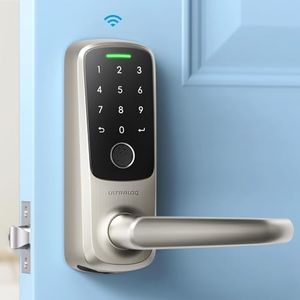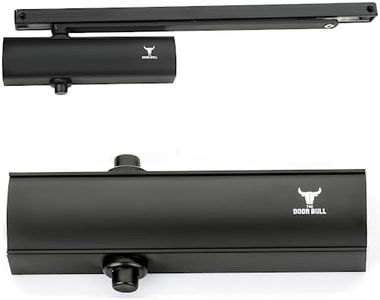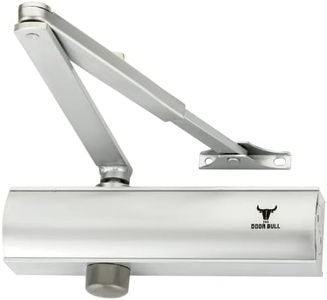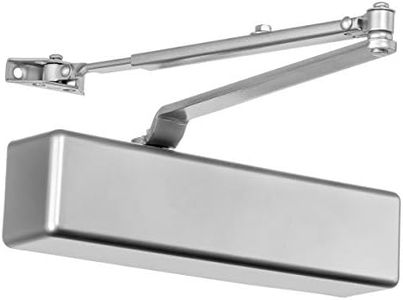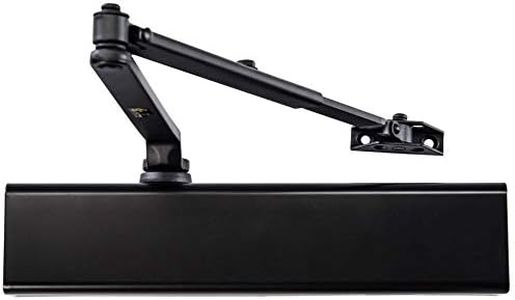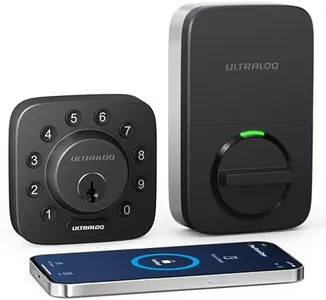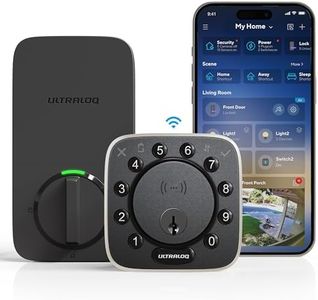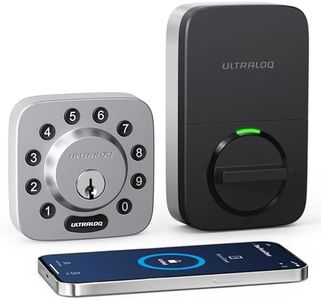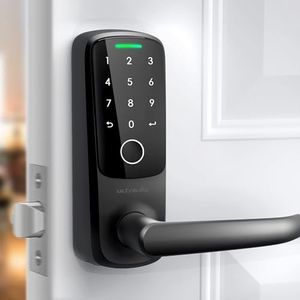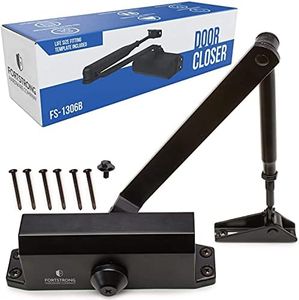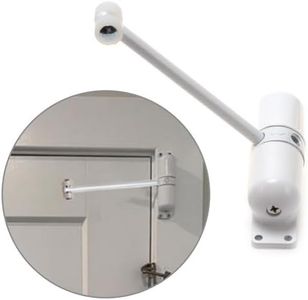We Use CookiesWe use cookies to enhance the security, performance,
functionality and for analytical and promotional activities. By continuing to browse this site you
are agreeing to our privacy policy
10 Best Commercial Door Closers
From leading brands and best sellers available on the web.Buying Guide for the Best Commercial Door Closers
When picking a commercial door closer, the goal is to ensure that doors close smoothly, safely, and consistently in various usage environments. Since these products are designed for frequent use in public or high-traffic spaces, choosing a closer requires attention to both functionality and the specific needs of your building and its users. Focus on features that provide durability, adjustability, and compliance with regulations, balancing ease of use with security requirements. Carefully reviewing the main specifications will help you make a thoughtful decision that fits your location.Closing Force (Size Rating)The closing force indicates how much power the door closer can exert to pull a door shut, and is usually specified by a size rating, commonly ranging from 1 to 6. A higher number means more force, suitable for heavier or larger doors, while a lower number is for lighter, smaller doors. If your door is standard interior and not too heavy, a lower size may suffice. Heavier exterior doors or those in windy areas will likely need a higher size to ensure reliable closing. Consider your door's weight, width, and exposure when choosing this spec.
AdjustabilityAdjustability refers to how much you can fine-tune the door closer's operation, often including settings for closing speed, latching speed (final swing to shut the door fully), and backcheck (resistance to opening force to prevent slamming). Models vary from basic with minimal tweaks to advanced with several adjustable valves. If your environment has varying needs, like fluctuating traffic flow or different door types, pick a closer with more adjustability. Simpler settings may be fine for stable, low-traffic doors where consistency is the only concern.
Mounting TypeMounting type describes how and where the door closer is attached, with options like regular arm (pull side), parallel arm (push side), or top jamb (above the door). Each fits different door-frame configurations and influences how the door operates in tight spaces or wide openings. Evaluate the door’s location and usage—regular arm is strong and common, parallel is neater and often used in schools or public buildings, while top jamb accommodates glass doors or limited header space.
Durability and Cycle RatingDurability refers to how long and reliably the closer functions, often measured by a 'cycle rating'–the number of open/close cycles it’s tested to endure. Higher cycle ratings mean better suitability for busy doors in commercial spaces. For doors used dozens or hundreds of times a day, pick a high cycle rating to avoid early failure. For occasional-use doors, a basic rating may suffice.
HandingHanding means whether the closer works on a right-hand, left-hand, or both types of door swing. Some models are universal, while others fit only one orientation. Look at how your door opens to select the correct handing. If you want flexibility or might change doors in the future, a non-handed closer is more versatile.
Compliance and Fire RatingCompliance and fire rating ensures compatibility with building codes, especially if the door is a fire exit or helps contain smoke. Certified fire-rated closers will have a label and are required on many public or high-occupancy doors. Always check local codes and pick a compliant model for safety and legal peace of mind.
